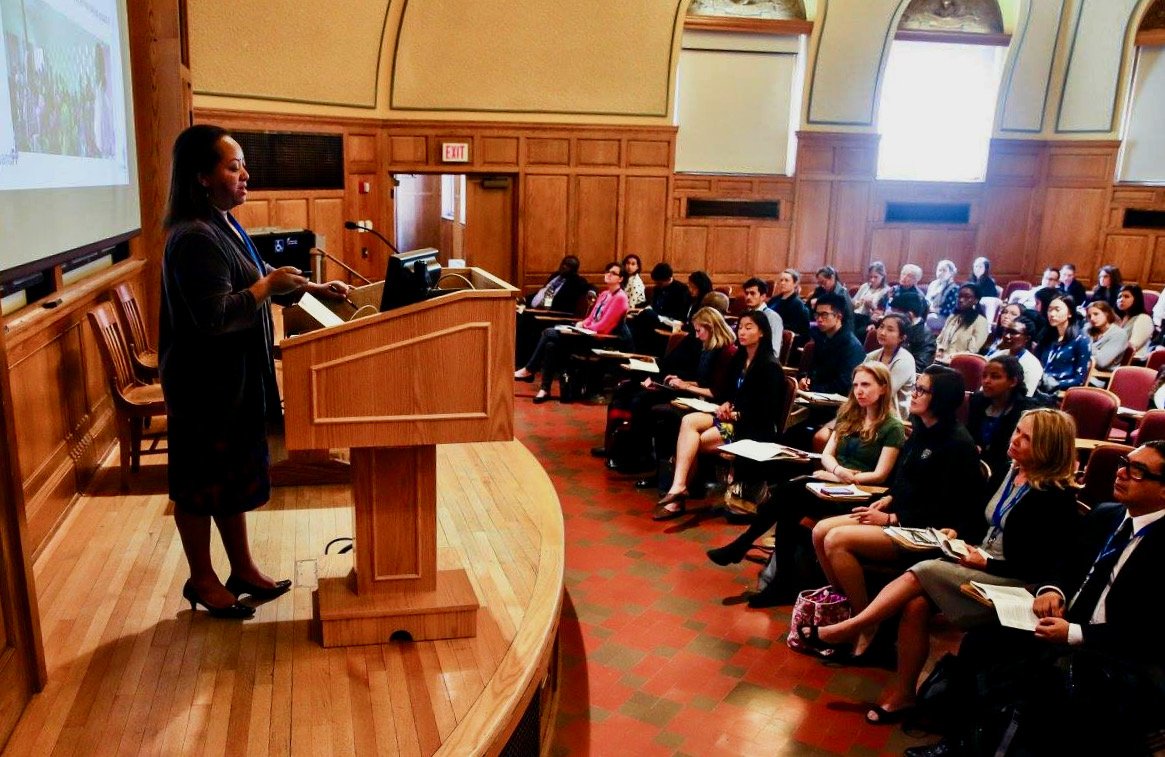
HEALTH EDUCATION STRATEGIES CERTIFICATE
Module 5: Girls and Schools
Education is associated with increased self-efficacy. Those who are more educated are more likely to believe that they have control over their own behavior, rather than relying on another individual or fate. Attending school on a regular basis can lead to behavioral change in many ways. School can influence knowledge, attitudes, and perceived control, allowing for change in socioeconomic status. Increased education is likely to expose people to prevention information as part of formal schooling and through the media. Educating girls and women, in particular, is essential to empowering them to control their lives and outcomes.(1)
Adolescent girls are uniquely capable of raising the standard of living in the developing world. Girls are likely agents of change, but they are often invisible to their societies. Women with secondary education report higher standards of living and each additional year of secondary education is associated with lower risk of child marriage or pregnancy before age 18.(2) Educated girls grow into educated women. Research shows that educated women have healthier children and are more likely to educate their own children. When girls and women earn income, they reinvest 90% of it into their families, while men invest only 30-40% in their families.(3) An extra year of primary school boosts girls’ future wages by 10-20%; an extra year of secondary school boosts girls’ future wages by 15-25%.(4) There is growing evidence that keeping girls in school reduces their risk of contracting HIV, and increases the likelihood of living a healthier and more productive life. Biologically, socially, and culturally, girls are more vulnerable to certain diseases, particularly, HIV infection. In many extremely endemic countries, social and cultural influences on girls’ behavior prevent them from making choices that could be protective: staying in school, buying protection, or discussing safer measure with parents, teachers, or partners. Girls are also more likely than boys to be sexually abused, and their first sexual encounters are often forced or violent. Thus girls’ vulnerabilities to infection make it critical to focus on general or HIV/AIDS-specific educational programs that may reduce their risk.(5) It has been found that preventing girls from receiving education will ultimately lead to one-quarter to one-half of them to become mothers before the age of 18.(6) Pregnancy is the leading cause of death among girls ages 15-19 worldwide. Seventy-five percent of HIV-infected youth in Africa are girls.(7)
Studies show that interventions to keep girls in school lead to lower pregnancy rates. Education about the consequences of pregnancy creates an incentive for girls to avoid unprotected sex. Also, girls are more empowered and optimistic about their future as a result of their continuing education and greater opportunities. Learning about their bodies' physical changes can help girls battle stigma, overcome their fears, and protect their health. Programs that provide health education about nutrition, HIV, anatomy, and hygiene can make a large difference in their lives. After intensive curriculum addressing life skills, HIV, math, language literacy, and vocational training, girls who participate can secure better paying jobs and greater income to invest in their families.(8)
Footnotes
(1) Gregson S, Zhuwau T, Anderson RM, Chandiwana SK. (1998). Is there evidence for behaviour change in response to AIDS in rural Zimbabwe? Soc Sci Med. 46:321–330.
(2) World Bank. (July 2018). "Missed Opportunities: The High Cost of Not Educating Girls" http://www.ungei.org/resources/files/Missed-opportunities-high-cost-of-not-educating-girls-World-Bank-July-2018.pdf.
(3) Chris Fortson, “Women’s Rights Vital for Developing World,” Yale News Daily 2003. https://yaledailynews.com/blog/2003/02/14/womens-rights-vital-for-developing-world/#:~:text=Data%20supports%20educating%20women%20as,that%20country's%20child%20mortality%20rates..
(4) Psacharopoulos, G and Patrinos, H.A. “Returns to Investment in Education: A Further Update,” Policy Research Working Paper 2881 [Washington, D.C.: World Bank, 2002].
(5) Jukes, M, Simmons S, Bundy D. (2008). “Education and Vulnerability: the role of schools in protecting young women and girls from HIV in southern Africa.” AIDS 22 (4): S41-S46.
(6) United Nations Children’s Fund. (2000). Equality, Development and Peace. https://www.unicef.org/publications/files/pub_equality_en.pdf.
(7) Global Coalition on Women and AIDS. (2006). Keeping the Promise: An Agenda for Action on Women and AIDS. https://www.unfpa.org/publications/keeping-promise-agenda-action-women-and-aids.
(8) The Girl Effect. "Impact & Insights" https://www.girleffect.org/what-we-do/impact-and-insights/.
